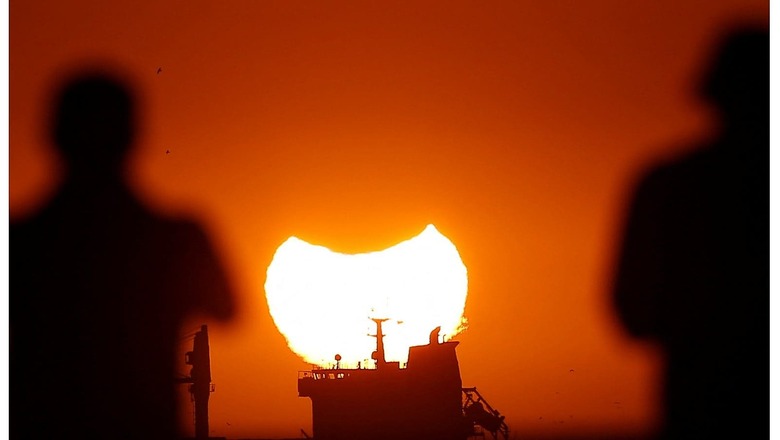
views
A partial solar eclipse or ‘Surya Grahan’ will be visible today from most parts of India along with several regions of Europe, the Middle East, north-eastern parts of Africa, western Asia, the North Atlantic Ocean.
The partial solar eclipse on Monday is a late afternoon eclipse and, as per the Ministry of Earth Science, will begin in India before sunset in the afternoon and will be seen from most of the places.
“In India the eclipse will begin before sunset in the afternoon and will be seen from most of the places. However, the same cannot be seen from Andaman & Nicobar Islands and some parts of north-east India [name of few of such places are Aizawl, Dibrugarh, Imphal, Itanagar, Kohima, Sibsagar, Silchar, Tamelong etc.],” the Ministry of Earth Sciences said in a press release.
The next solar eclipse will be visible from India on August 2, 2027, the press release said, adding that it will be a total eclipse. Read on to know when, where, how to watch the solar eclipse today.
What is a solar eclipse
A solar eclipse or Surya Grahan takes place when, at just the right moment, the Moon passes between the Sun and Earth. A solar eclipse occurs when the Moon comes between Sun and Earth and blocks the light of the sun, casting a shadow onto Earth. A solar eclipse takes place on a new moon day.
When the lunar disc partially obscures the solar disc, there will be a partial solar eclipse.
Partial solar eclipses take place when the Moon comes between the Sun and Earth, but the Moon only partially covers the Sun’s disk. During a partial solar eclipse, the Moon, the Sun and Earth don’t align in a perfectly straight line, and the Moon casts only the outer part of its shadow, the penumbra, on Earth.
About Today’s Partial Solar Eclipse
The partial eclipse today, October 25 will begin in India before sunset in the afternoon and will be seen from most of the places. However, it won’t be visible from Andaman & Nicobar Islands and some parts of north-east India (Aizawl, Dibrugarh, Imphal, Itanagar, Kohima, Sibsagar, Silchar, Tamelong etc.), the Ministry of Earth Sciences said.
The ending of the eclipse will not be visible from India as the same will be in progress after sunset. The obscuration of the Sun by the Moon will be .approximately between 40 and 50 percent at the time of maximum eclipse in north-western parts of the country.
In other parts of the country, the percentage coverage will be less than the above values, the ministry said.
Where Will Partial Solar Eclipse be Visible From in India
The partial solar eclipse will be visible from most parts of the country today except for Andaman & Nicobar Islands and some parts of North-east India – Aizawl, Dibrugarh, Imphal, Itanagar, Kohima, Sibsagar, Silchar, Tamelong etc.
In Delhi and Mumbai, the percentage coverage of the Sun by the Moon at the time of greatest eclipse will be around 44 per cent and 24 per cent respectively, Ministry of Earth Sciences said.
The duration of eclipse from the beginning up to sunset time will be 1 hour and 13 minutes and 1 hour 19 minutes for both Delhi and Mumbai respectively. In Chennai and Kolkata, the duration of the eclipse from the beginning up to sunset time will be 31 min and 12 min respectively. In Bengaluru, the eclipse will last for 45 minutes.
Here’s When the Eclipse Will Begin in Some Cities:
-Delhi: 4.29 pm | Duration: 1 hour 12 minutes
-Mumbai: 4.49 pm |Duration: 1 hour 19 minutes
-Bangalore: 5.12 pm | Duration: 43 minutes
-Kolkata: 4.52 pm | Duration: 11 minutes
-Chennai: 5.14 pm | Duration: 30 minutes
-Bhopal: 4.42 pm | Duration: 1 hour 4 minutes
-Hyderabad: 4.59 pm | Duration: 48 minutes
-Kanyakumari: 5.32 pm | Duration: 27 minutes
CLICK HERE to see the detailed list of cities the solar eclipse visible in and the duration.
How to watch solar eclipse | DOs and DON’Ts
Eclipsed Sun should not be viewed with the naked eye, even for a very short time. Watching a solar eclipse directly can cause permanent damage to the eyes due to the high-density radiation from the sun’s photosphere and can, in some cases, even lead to blindness even when the Moon covers most
portion of the Sun.
Safe technique to observe the solar eclipse are either using proper filter
like aluminized Mylar, black polymer, welding glass of shade number 14 or by making projection of Sun’s image on a white board by telescope.
Look at the uneclipsed or partially eclipsed sun through an unfiltered camera, telescope, binoculars, or other optical device is never advisable.
Similarly, it is not advisable to look at the sun through a camera, a telescope, binoculars, or any other optical device while using your eclipse glasses or hand-held solar viewer — the concentrated solar rays will damage the filter and enter eye(s), causing serious injury, as per Nasa.
Solar Eclipse Delays Govardhan Puja, Bhai Dooj
While Govardhan Puja is usually celebrated a day after Diwali, this year, it has been delayed by a day due to the partial solar eclipse and will now observed on October 26.
Know More on Govardhan Puja 2022 Date, Time Here
Bhai Dooj this year has also been delayed by a day due to the solar eclipse and will be celebrated on October 26.
Meanwhile in Uttarakhand, the doors of the Badrinath Dham and Kedarnath Dham will remain closed today due to the partial solar eclipse.
Read all the Latest India News here










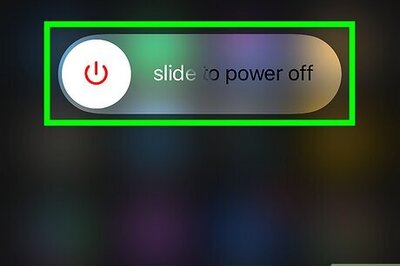
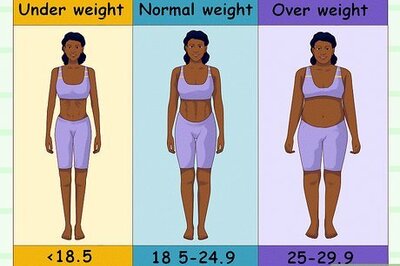


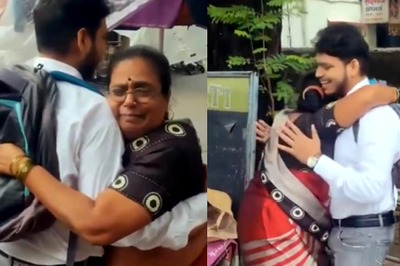


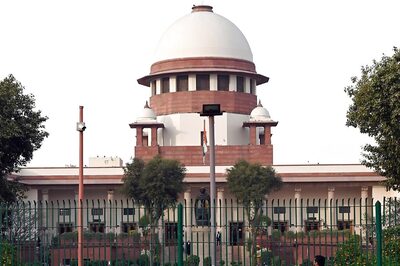
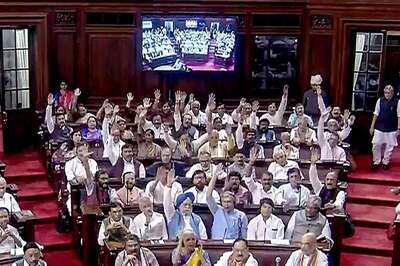
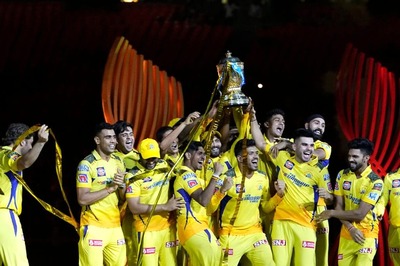
Comments
0 comment